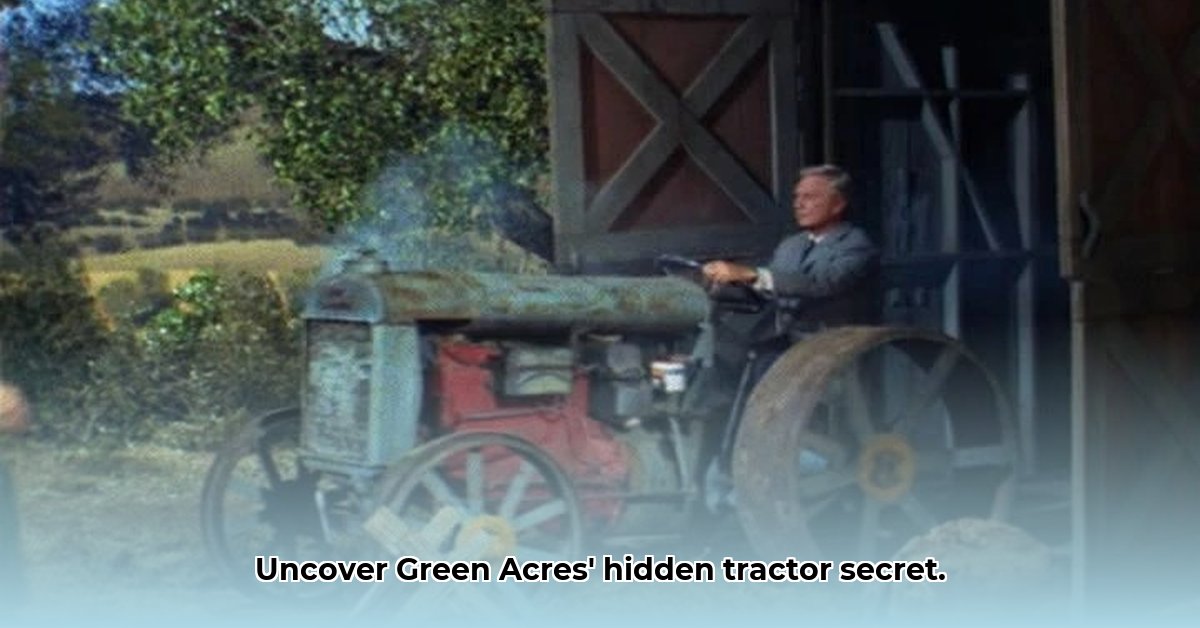
The rhythmic chug of a vintage tractor, the smell of freshly turned earth—these sensory details evoke a potent nostalgia for many. But the enduring appeal of classic farm machinery, like the fictional Hoyt Caldwell tractor from Green Acres, goes beyond simple sentiment. For more images of classic tractors, visit this dream tractors site. This essay explores how the Hoyt Caldwell, a stand-in for real-world giants like the Fordson and John Deere, reveals the enduring cultural power of specific agricultural machinery, shaping perceptions of rural life and influencing long-term brand loyalty.
A Tractor's Tale: More Than Just Metal and Wheels
The Fordson Model F, the likely inspiration for the Hoyt Caldwell, wasn't just a machine; it was a revolution. Before its mass production, farming was brutally labor-intensive. The Fordson's relative affordability democratized mechanization, fundamentally transforming agricultural practices and the lives of farmers. Its near 90% market share at its peak underscores its transformative impact. John Deere, another industry titan, further solidified this technological shift. These weren't just competing companies; they were shaping the very image of American agriculture. The Hoyt Caldwell tractor, therefore, serves as a powerful lens through which to examine their lasting legacies.
From Fictional Field to Silver Screen: Cultivating Cultural Icons
The Hoyt Caldwell tractor's appearances in Green Acres, along with similar brand placements in films like A Christmas Story and Footloose, subtly yet effectively shaped cultural perceptions. These seemingly minor details imprinted a specific image of rural America: hardworking farmers, simpler times, and the unwavering presence of these powerful machines. This visual shorthand, whether intentional or not, successfully integrated the tractors into the collective consciousness, influencing viewers' understanding and emotions associated with rural life. This unintentional product placement significantly benefited John Deere and Fordson.
The Enduring Power of Nostalgia: Why We Still Love a Classic Tractor
The enduring appeal of brands like Fordson and John Deere stems largely from nostalgia. A classic tractor, real or fictional, evokes memories, feelings of simpler times, and a connection to a bygone era. This emotional connection significantly contributes to their transformation from simple machinery to potent cultural icons. Both brands unknowingly leveraged this power of nostalgia to build lasting brand loyalty, creating strong emotional associations linked to reliability, security, and a rich history within rural American identity.
Lessons from a Fictional Farmhand: What Modern Brands Can Learn
The Hoyt Caldwell tractor offers invaluable lessons for modern manufacturers. Fordson and John Deere's success emphasizes the importance of sustainable brand building across different sectors:
- Manufacturers: Nostalgic imagery in marketing, coupled with long-term investments in brand heritage narratives, is key to success.
- Museums: Exhibits featuring iconic tractors, alongside educational programs on agricultural history, promote brand appreciation.
- Film & TV: Accurate and authentic tractor depictions enhance realism and unlock storytelling potential.
How to Leverage Tractor Brand Nostalgia in Modern Agricultural Marketing
The Hoyt Caldwell tractor’s success mirrors the real-world impact of Fordson and John Deere. Their mass-produced affordability revolutionized farming, democratizing access to mechanization. This, combined with their cultural representation in media, created powerful brand associations.
The sensory experiences associated with these tractors—the sights, sounds, and smells—trigger strong emotional responses. This is not merely sentimentality; it’s a powerful marketing tool that builds trust and loyalty.
Modern marketers can harness this nostalgic power through retro-inspired designs, heritage marketing campaigns highlighting historical impact, museum collaborations, compelling digital storytelling, and targeted advertising to reach specific audiences. This approach transcends generations, tapping into a shared cultural memory that holds profound significance.